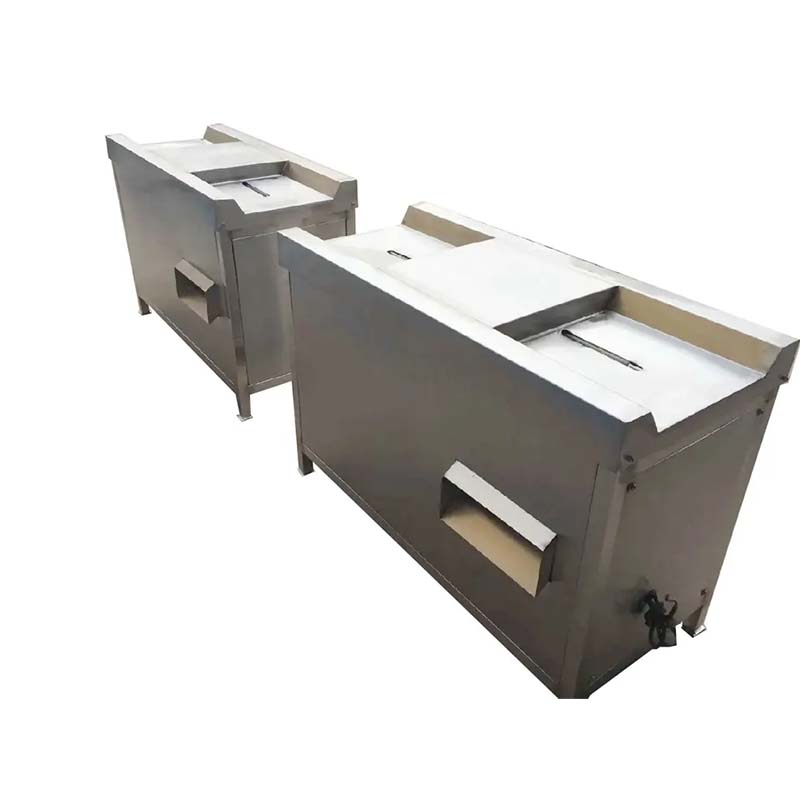scalding tank
Dec . 05, 2024 14:55 Back to list
scalding tank
Understanding Scalding Tanks Safety, Design, and Usage
Scalding tanks are crucial components in various industries, particularly in food processing, where they are utilized for operations such as scalding poultry before plucking. Scalding is a process that involves immersing an animal carcass in hot water, which loosens the feathers or hair, making it easier to remove. However, the design, operation, and safety measures associated with scalding tanks are of paramount importance, not only for efficiency but also for health and safety considerations.
The Importance of Scalding
In the poultry industry, scalding serves multiple purposes. Primarily, it ensures that the feathers are removed efficiently, which is essential for maintaining cleanliness and hygiene standards. The heat from the water also helps in denaturing proteins in the skin, which can assist in the processing of meat. Moreover, scalding helps to reduce microbial load on the carcass, thereby improving the overall safety of the meat products.
Design and Operation
Scalding tanks are typically designed as large containers that can hold heated water. The water temperature in these tanks usually ranges from 140°F to 160°F (60°C to 71°C), depending on the species and the desired outcome. Proper temperature management is essential, as excessively high temperatures can result in cooking the meat, while lower temperatures may not effectively loosen the feathers.
The design of a scalding tank can vary. Some tanks are equipped with mechanisms for circulating water to maintain an even temperature throughout the tank, while others might have in-built heating elements to ensure that the water temperature remains stable. Moreover, the tank's size is often determined by the scale of operation—larger processors will require bigger tanks to handle higher volumes of birds.
Material and Construction
The materials used for constructing scalding tanks are equally critical
. Typically, they are made from stainless steel due to its corrosion resistance and ease of cleaning. This is particularly important because the tanks need to be sanitized thoroughly to prevent contamination. Furthermore, stainless steel is durable and can withstand the high temperatures and pressures involved in scalding processes.scalding tank

The inside of the tank may be designed with sloped bottoms to enable effective drainage and prevent the accumulation of debris, which can harbor bacteria. Additionally, certain tanks may include filtration systems to keep the water clean over multiple batches.
Safety Considerations
While scalding is essential for processing, safety must always be prioritized. Workers handling the scalding tanks need to be trained to recognize the high-temperature risks associated with this process. Personal protective equipment (PPE) such as gloves, aprons, and face shields should be mandatory to prevent burns or injuries.
Operators should also implement lockout/tagout (LOTO) protocols to ensure that scalding equipment is properly shut down and cannot be accidentally reactivated while maintenance or inspections are taking place. Furthermore, regular maintenance checks are critical to identify any damage or wear that could lead to leaks or other safety hazards.
Environmental Impacts
The operation of scalding tanks also has environmental implications that need to be addressed. Efficient water usage and proper waste management are essential for reducing the environmental footprint of scalding processes. Some facilities are adopting water recycling systems to reduce consumption, as well as treating wastewater to mitigate pollution before it is discharged.
Conclusion
In summary, scalding tanks play a vital role in the processing of poultry and other meat products, providing a necessary step in ensuring the cleanliness, safety, and efficiency of meat preparation. Proper design, careful operation, and strict adherence to safety protocols are essential to maximizing the effectiveness of these tanks while minimizing risks to workers and the environment. As the industry evolves, continuous advancements in technology and safety measures will support the ongoing quest for better practices in meat processing, ensuring high-quality products while safeguarding health and safety.
-
Hot Sale 24 & 18 Door Rabbit Cages - Premium Breeding Solutions
NewsJul.25,2025
-
Automatic Feeding Line System Pan Feeder Nipple Drinker - Anping County Yize Metal Products Co., Ltd.
NewsJul.21,2025
-
Automatic Feeding Line System Pan Feeder Nipple Drinker - Anping County Yize Metal Products Co., Ltd.
NewsJul.21,2025
-
Automatic Feeding Line System - Anping Yize | Precision & Nipple
NewsJul.21,2025
-
Automatic Feeding Line System - Anping Yize | Precision & Nipple
NewsJul.21,2025
-
Automatic Feeding Line System-Anping County Yize Metal Products Co., Ltd.|Efficient Feed Distribution&Customized Animal Farming Solutions
NewsJul.21,2025






